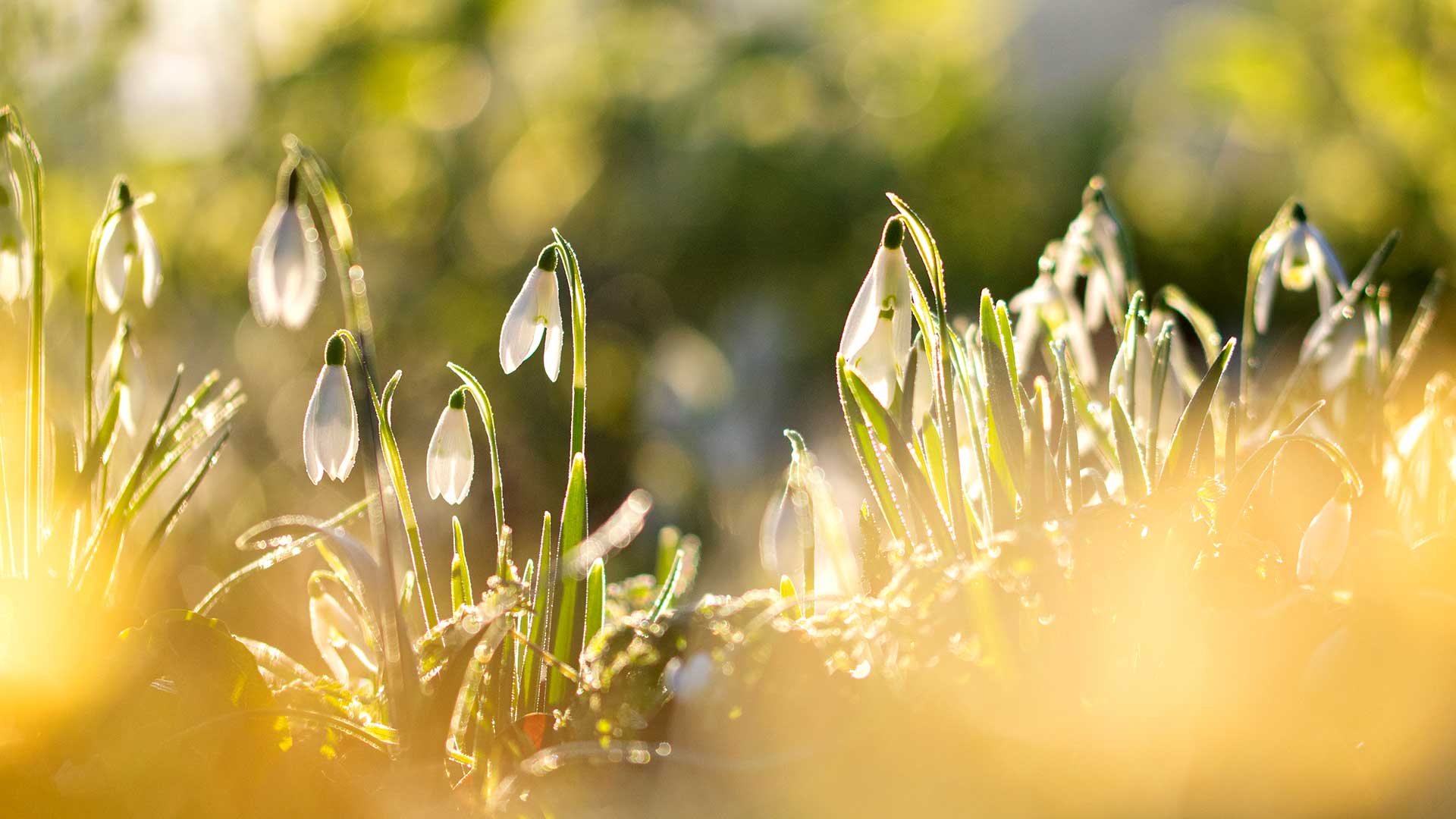
Learning how to grow snowdrops is so easy, you'll wonder why you never did before. Their nodding heads appear from January onwards, and if you plant them in the right spot in your garden, they'll flower year after year.
Snowdrops are often found growing in woodlands, so if you love the garden trend of naturalistic planting, these delicate beauties are a great choice. Many varieties will spread naturally over time, creating a carpet of flowers. Alternatively, if space is limited, you can grow them in pots.
I turned to professional gardening experts for tips on growing these early bloomers, including when and where to plant them, and whether they need any ongoing care. Below, you'll find plenty of practical advice for a gorgeous late-winter display.
How to grow snowdrops in your garden in February
Ready to add some of these stunning blooms to your outdoor space? In addition to the snowdrops themselves, you'll need a trowel and a pair of gardening gloves (the bulbs can irritate the skin). If you plan to grow them as patio container plants, you'll also need a good-quality potting mix.
Bear in mind that, like all bulbs, snowdrops are poisonous to both humans and pets.
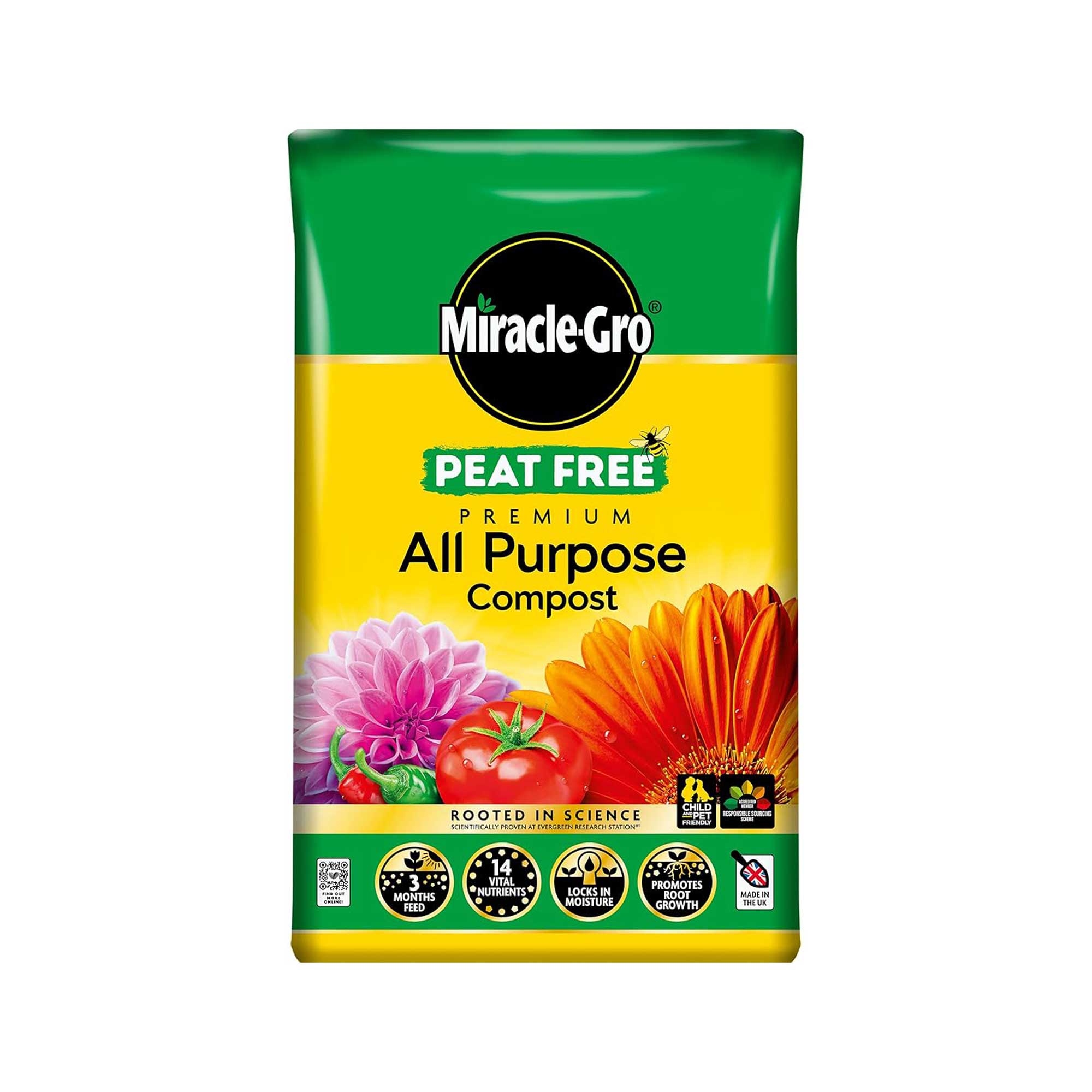
This popular mix from Miracle-Gro can be used to plant snowdrops in containers. It includes coir, which is great for absorbing water and keeping plants hydrated.
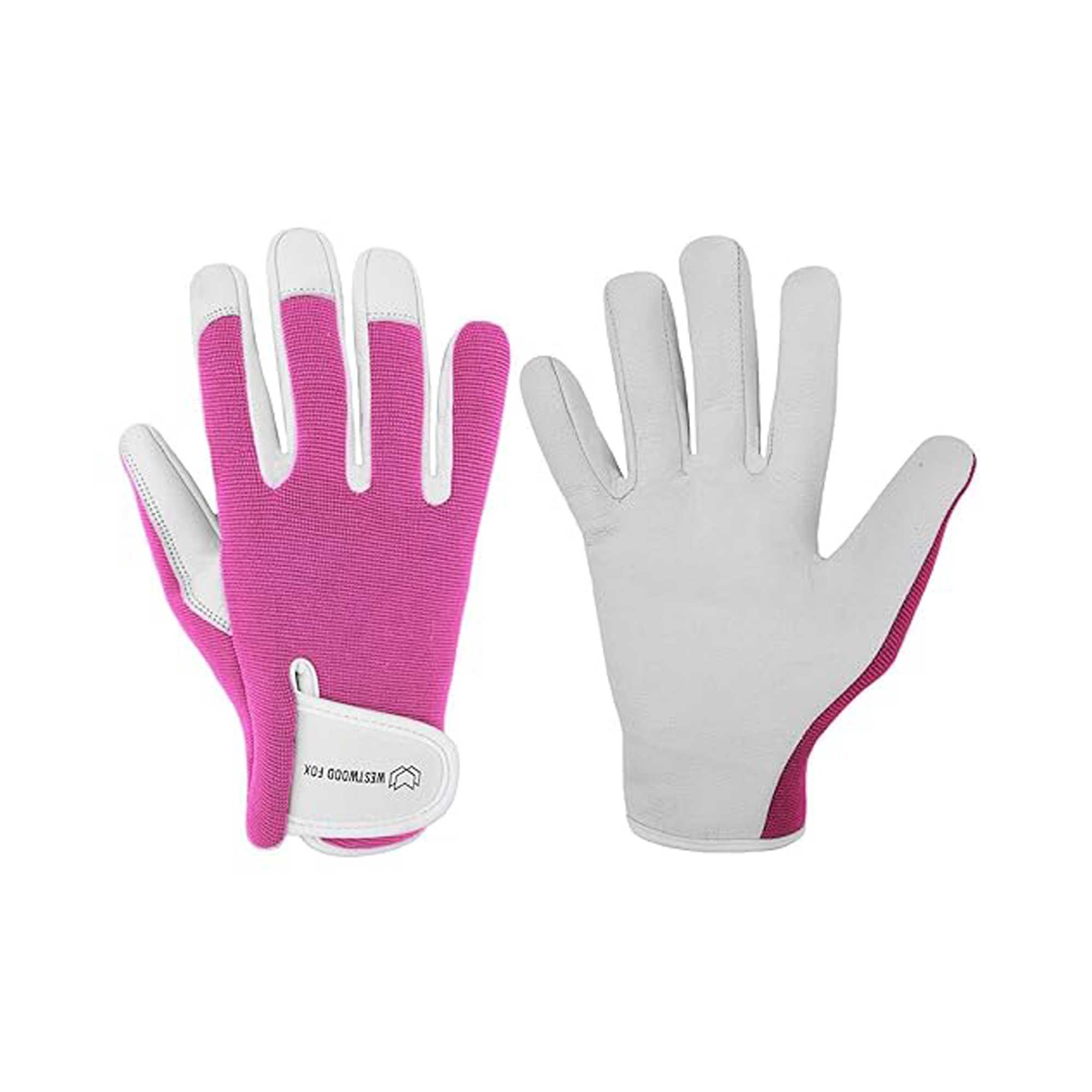
These breathable and water-resistant gloves from Westwood Fox come in lots of different colours, including pink, cyan, and green.
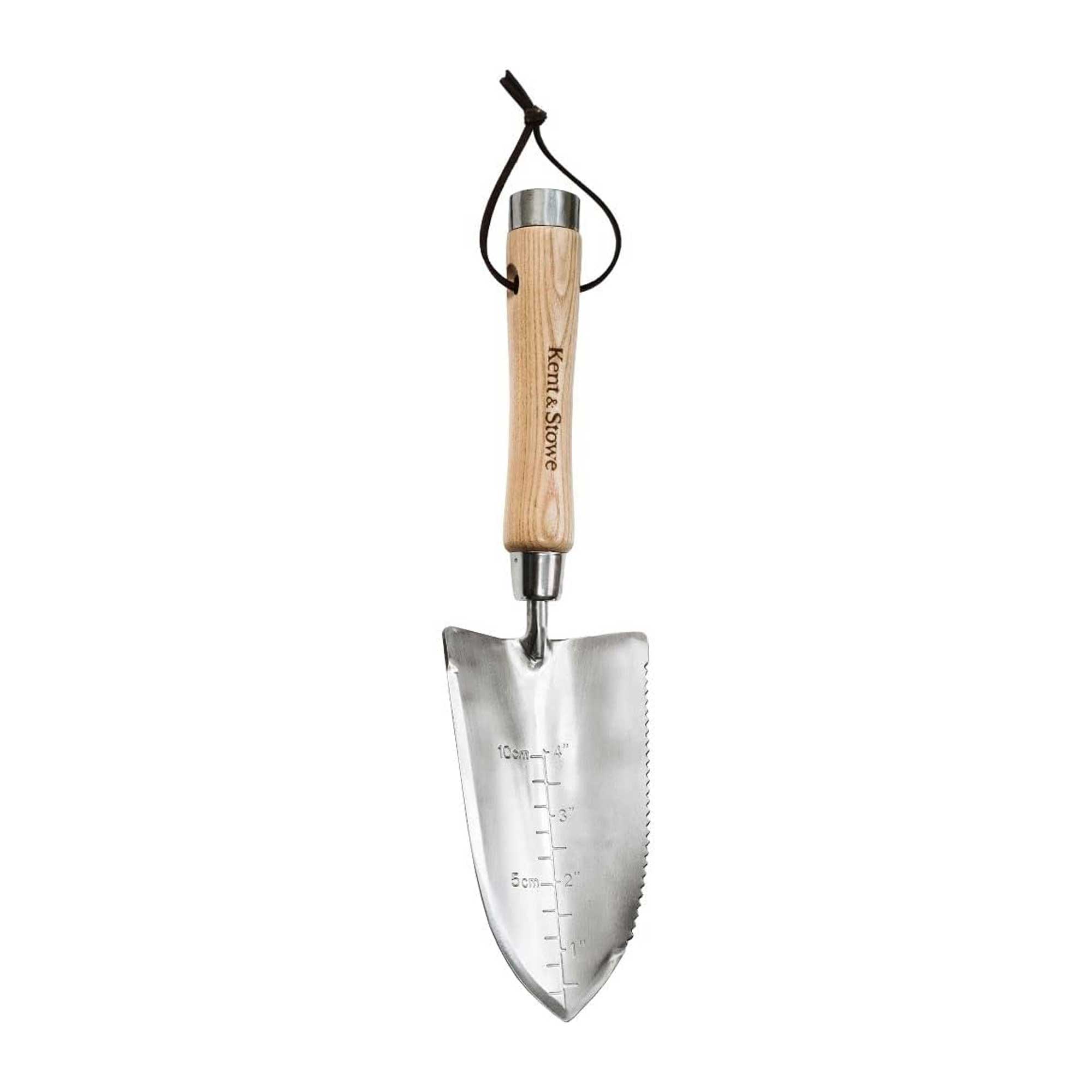
We love the timeless design of this trowel, with its stainless steel head (which includes a handy planting depth scale) and ash wood handle.
When to plant snowdrops
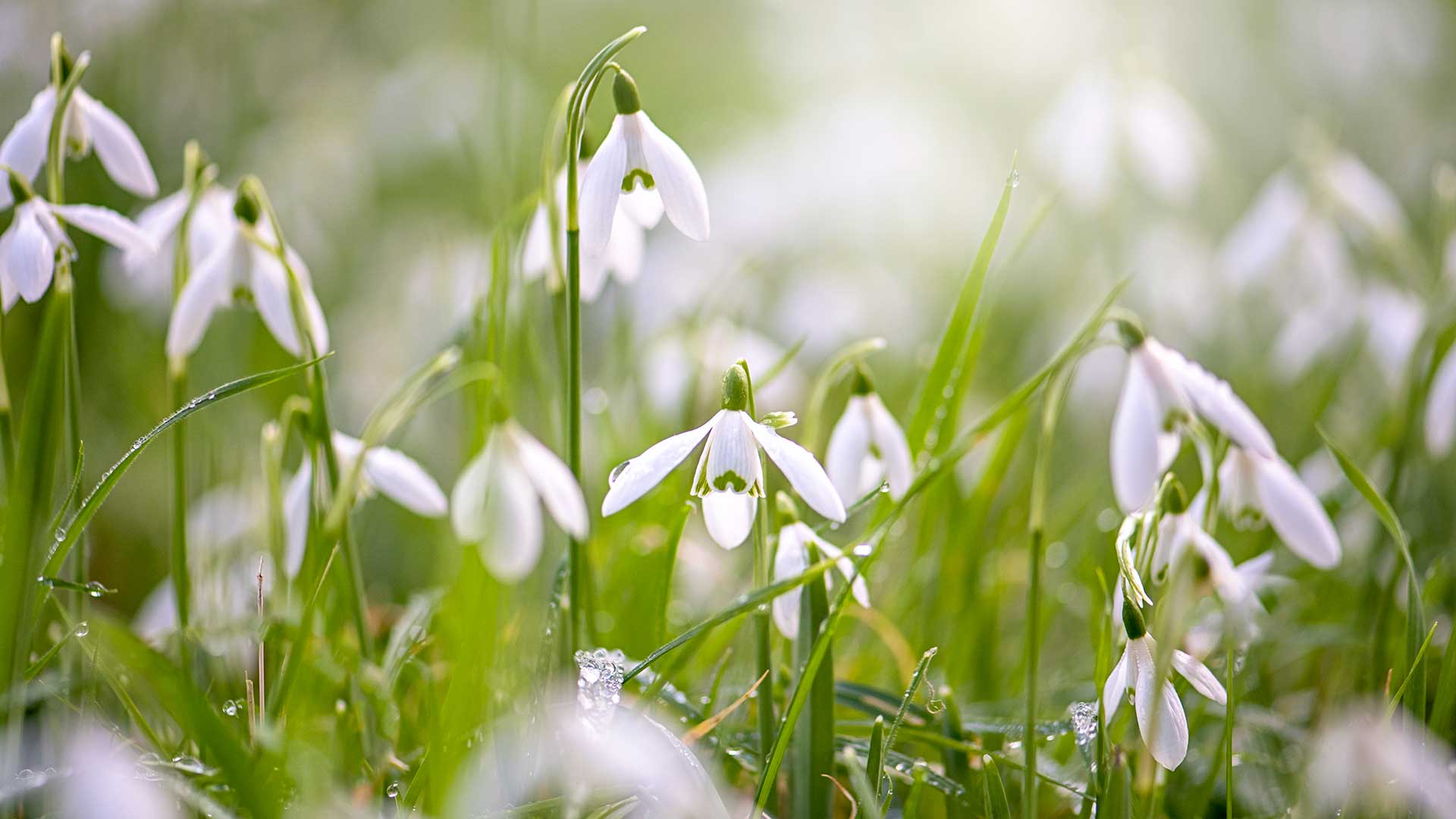
Knowing when to plant these spring bulbs is the first step in enjoying snowdrops in your garden.
Just like daffodils, tulips, and other early-blooming favourites, you can get snowdrop bulbs in the ground in autumn. However, Angela Harding of Hayes Garden World warns that they can have a low success rate. "It is important to buy the bulbs as soon as they come into the garden centre," she says. "Plant immediately, as they dry out quickly and subsequently are highly likely to fail.
"We plant snowdrops ‘in the green’ as they are more likely to succeed than planting the dry bulbs in autumn," Angela continues. As she explains, this is just after they have finished flowering in spring and before the leaves start to die back."
"So, if you're deciding what to plant in February, you can add snowdrops to your list – they are often available "in the green" from garden centres at this time of year. "Flore Pleno" bulbs are currently available from Sarah Raven, for instance, which are a scented, double-blooming variety.
Where to plant snowdrops
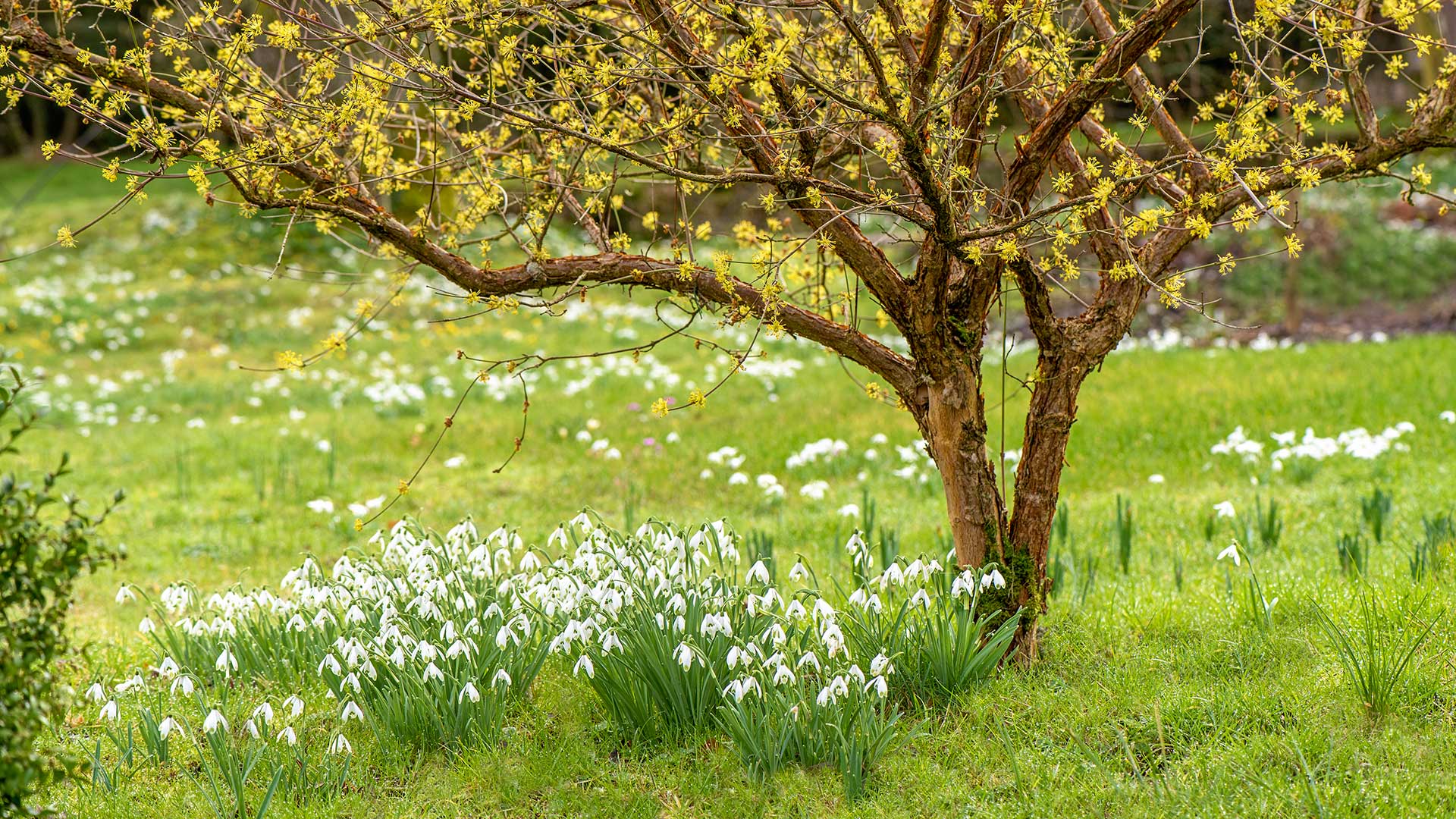
"Snowdrops need a humus-rich, moisture-retentive soil in partial shade; they love a woodland garden which receives some sunshine," says Angela. They work beautifully beneath trees and shrubs, and you can also grow them as rock garden plants.
Before planting, Angela recommends working some well-rotted farmyard manure, leaf mould, or home-made compost into the soil, as well as a little bit of granular general fertiliser.
"If the soil is dry when you plant them, remember to give them a good water after planting," she adds. If you're planting dry bulbs in the autumn, do so at a depth of three to four inches, she adds.
Caring for snowdrops
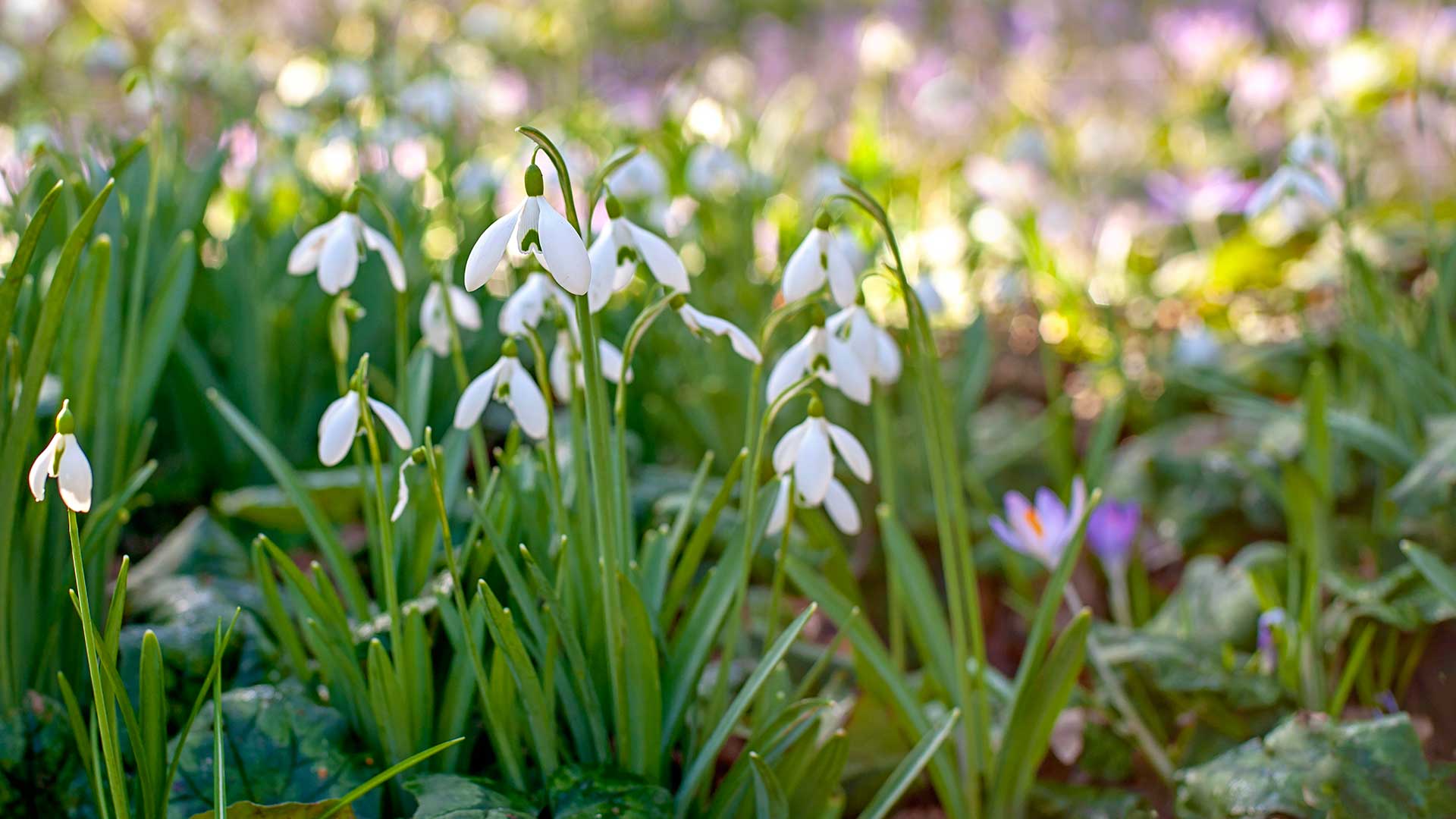
Once planted, snowdrops don't require much in terms of maintenance, if you've planted them in a suitable location.
"Snowdrops only need watering if they’re in pots," says Julie Kendall of the Eden Project. "They are likely to be dormant during dry weather and we aren’t likely to see a drought during their active growing period in autumn, winter and early spring!"
If you've read our guide on how to deadhead plants properly, you might be wondering whether it's worth giving faded snowdrops a trim. However, Julie says there's no need. "It’s great to let them go to seed and spread."
Like with what to do with daffodils after flowering, leave the leaves to die back naturally on your snowdrops, too. "They need to continue to photosynthesise to feed the bulb for the following year," Angela explains.
Top tip: Once they have established, you can lift and divide clumps of snowdrops as they spread over the years – Julie recommends doing this in April or May.
FAQs
How do you grow snowdrops in containers?
As well as winter bedding plants, snowdrops make pretty options for pots or window boxes, but there are a few things to consider for the best results.
"When growing snowdrops in containers, make sure the compost is a good quality peat-free compost with good drainage," notes Angela. "If it feels a little heavy, add some horticultural grit or some small chunk chipped bark to open up the structure. Add a little granular general-purpose fertiliser," she adds.
The container should be located in a semi-shaded position, she continues. If it's on the ground, she recommends using pot feet or a few stones to raise it up, so the water can drain away and not pool around the base of the container. She also recommends keeping an eye on the moisture levels, and watering if the compost is dry.
"If you are planting dry bulbs, you may have to cover them when they start to sprout as pigeons are prone to pulling up the bulbs," she adds. "Some protection from mice and squirrels may be necessary."
Top tip: Julie recommends leaving space at the top of the pot for watering, and to top-dress it with gravel to retain moisture.
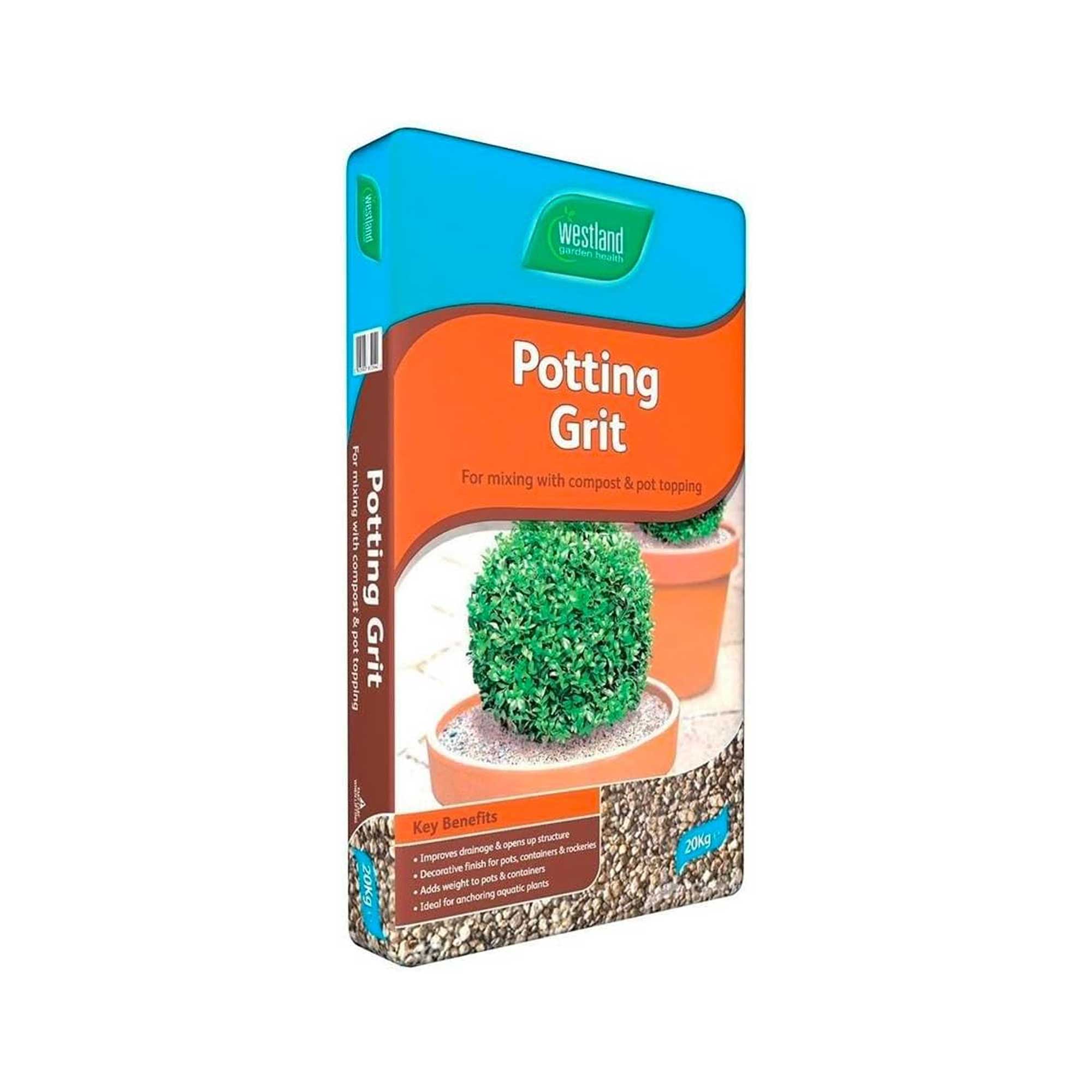
This popular horticultural grit is ideal for improving drainage for your potted bulbs.
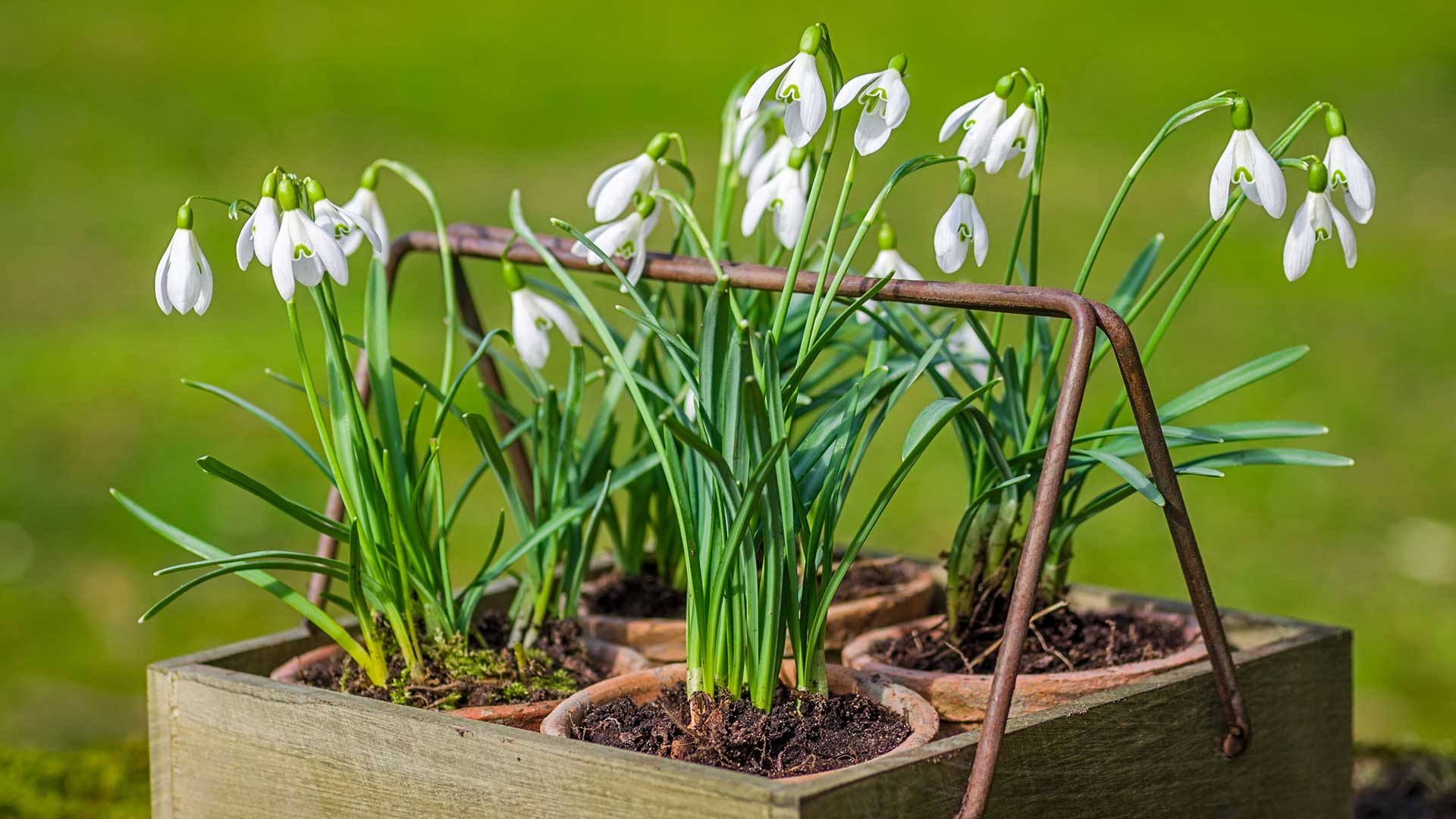
Should you feed snowdrops?
Angharad James, a product manager at Maxicrop, says, “While snowdrops don’t require heavy feeding, a gentle application of a natural bio-stimulant can help support strong growth and encourage better flowering."
She recommends a liquid seaweed-based solution, such as Maxicrop All Purpose Growth Stimulant (available from Amazon), to be applied in early spring as the leaves emerge. This will provide the essential nutrients, amino acids, and other compounds proven to improve plant growth, without overwhelming the bulbs, she says. "Applying again after flowering, before the leaves die back, can help replenish energy reserves for the following year’s blooms.
"Avoid high-nitrogen fertilisers, as these promote excessive leafy growth at the expense of flowers.”
Looking for more advice for the chillier months? Now you've learned how to grow snowdrops, our guide on winter gardening mistakes is a must-read this season.







